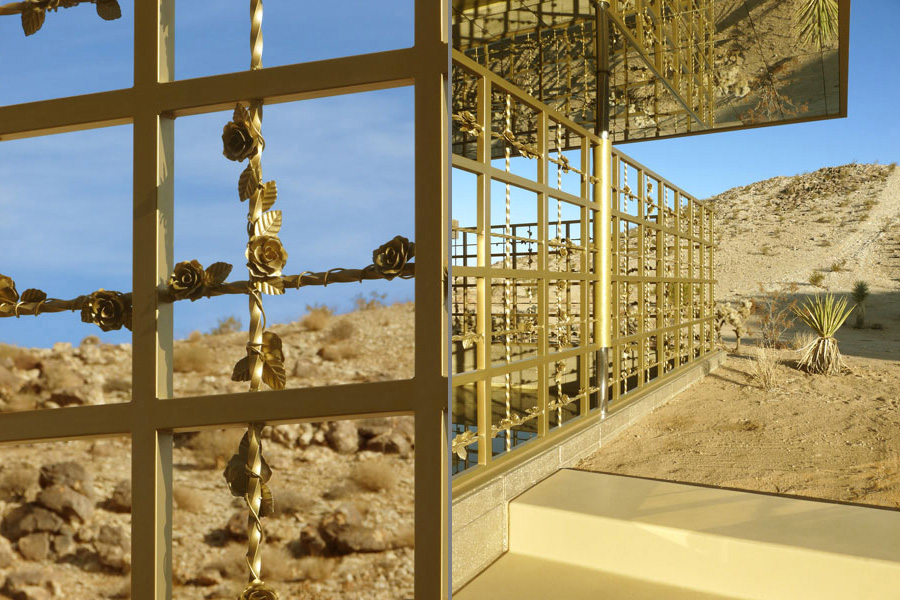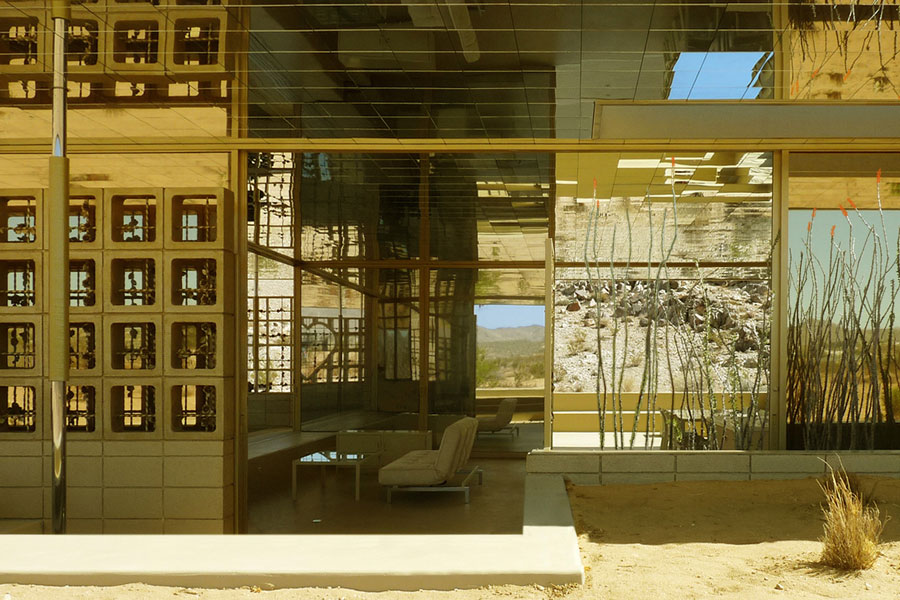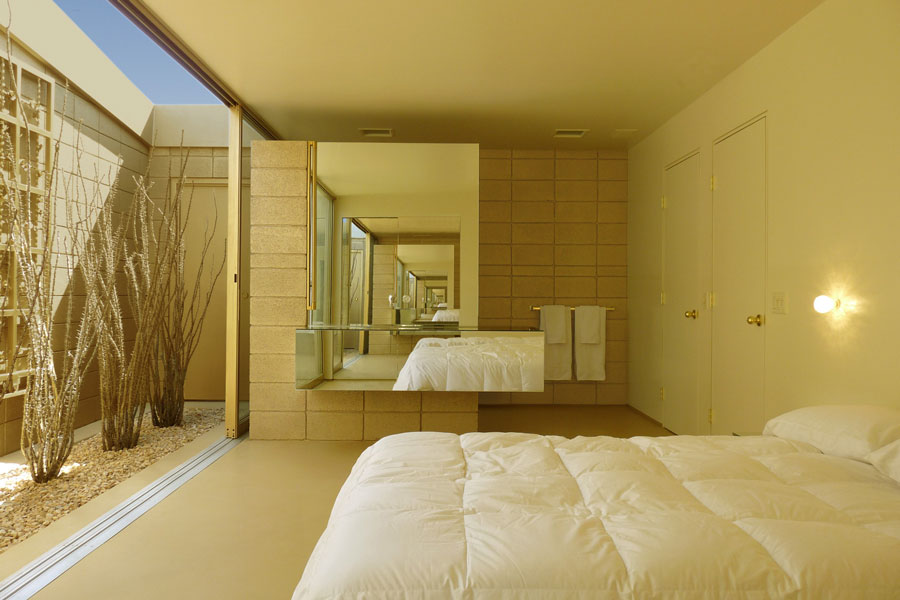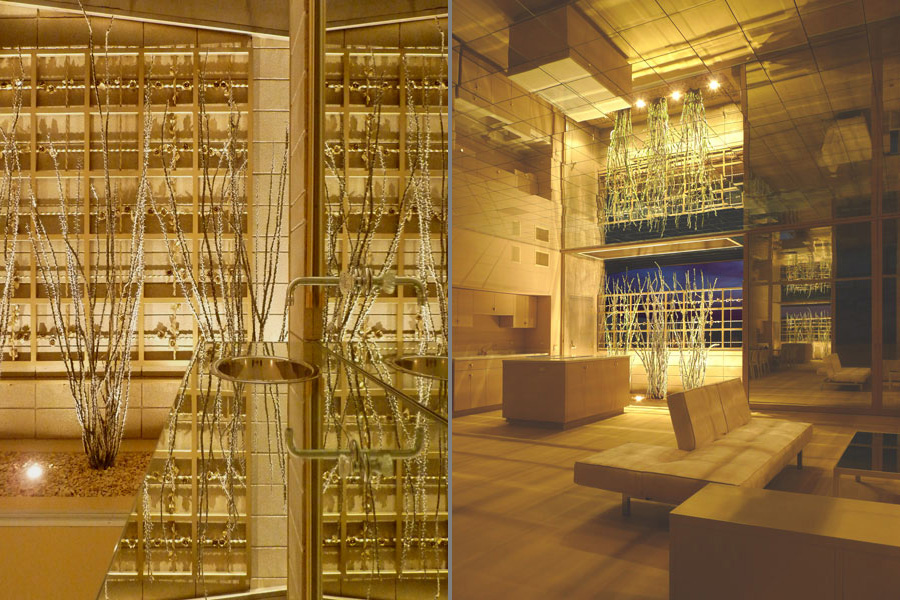A gold house is a loaded object. The color has so much cultural baggage that it can’t be separated from its cultural associations, and its meaning is unstable because it comes from neither the object itself, the architect, the viewer, nor the cultural context, but a dynamic interplay between them all. It undermines the false tenets of formalism by refusing to lie down and play abstract. That’s why you’ve never seen a modern gold house before, because architects have feared this kind of color for decades. They still do, and that is exactly why a gold house looks so good. Pit of your stomach, scary good, because it’s meaning isn’t static, and it may turn on you. Add some polished brass jewelry, some preppy tweed, and some metallic-tinted glass ripped straight from the evil corporate modernist handbook, and you really have something interesting.
For me, the most destabilizing and potent aesthetics are those that engage both the known and the unknown. So I like to work with known, loaded aesthetics that are reworked to get closer to bigger ideas than architecture has ever considered. I make no distinction between high and low culture, structure or decoration. Metallic gold paint, hearts, flowers, and mirrored ceilings aren’t low culture . . they are our culture. Conceptual art, contemporary theory, and couture fashion are engaged just as easily and it all becomes new architecture. The only people that care about distinctions between high and low culture aren’t interested in beauty or truth anyway. Those that are, know that you better take it wherever you find it. I found it in the things I know and love, Southern California culture, and some big ideas that I can only get at with this odd architectural vocabulary that may be new to others but which I speak fluently.
None of the elements of Acido Dorado have a single reference or can be considered separate from the context or the architecture. I feel around for a coherent and irreducible whole where each element modifies the others in such a way that there is no fixed meaning, but a constantly shifting haiku that can be reconsidered moment by moment. The death/life, fake/real, organic and abstract conundrum of the roses feedback from the dead/living landscape of the desert into the reflection/object, mirage-like mirrored surfaces. And those are modified by the real spatial inversion of the mirrored plan layout of the bedrooms, and further by the reflections off the water of the dry desert. The heart window initially invites an ironic pop reading but immediately shuts it down as its sincere and sweet connotations eviscerate irony and pastiche. And then you are left to consider its real materiality, and its reflection and opposition in the abstract composition of the architecture. It’s meaning isn’t in a symbolic statement, or coded references, but in it’s experiential qualities, an odd suspension between magic and logic, and how it transforms things we thought we knew.
I am finding much wider possibilities for architecture simply by continuing an experimental practice that is open, intellectually engaged, and above all- truthful. I ask questions I don’t know the answers to, and there is no predetermined “style” that every project just happens to take. This approach obviously has none of the hallmarks of the kind of stylistically focused ‘movement’ that architects always seem to be looking to follow or lead. The dominant paradigm for contemporary architecture for most of my lifetime has been a certain kind of universal abstract formalism that is about shape and form rather than meaning, and I have no intention of challenging that. Just as there will always be some version of corporate pop music, there will always be meaningless abstract architecture- I am not out to critique it, I just don’t care about it. As always, the real potential is found in an underground culture where new ideas and aesthetics can arise, take risks, and make things that really matter. We can make our own meaningful architecture. And when we do that, we can create authentic new experiences, learn about ourselves, our place, our lives, and our friends in ways that mainstream architecture can barely comprehend, let alone replicate.




















